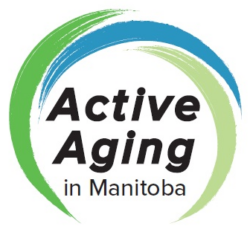For older adults physical activity and exercise are great ways to maintain the quality of your life, feel energetic and live a happy and rewarding life. It doesn’t matter what your age is or your current level of activity, it is never too late to experience the joy and health benefits of an active lifestyle. Many older adults may feel it is too late to change their lifestyle or feel uneasy about trying new exercises or activities. Our goal is to help you understand physical activity and exercise, the benefits, and most importantly help you take the small easy steps to fit activity into your daily lives!
The Health Benefits of Being Active
- Improve your balance
- Reduce falls and injuries
- Help you stay independent longer
- Help prevent heart disease, stroke, osteoporosis, type 2 diabetes, some cancers and premature death
How can you get active?
Physical activity can be simple and even unplanned. Walk to the mailbox, take the stairs instead of the elevator, rake some leaves, do some chair yoga, get on a bike, dance! Choose what works for you – and what’s fun! Start where you are and do whatever you are able to. Small changes can make huge improvements over time.
The more you do, the better you’ll feel. Get active and see what you can accomplish. Aim to move more and sit less in your daily life!
How to get started:
Here are some tips to get you started and keep you motivated on your healthy aging journey. In addition to the health benefits of getting active, you will find activities you do every day will become easier.
1. Start slowly with an activity that you enjoy. Remember, it is a journey – getting fit is not going to happen overnight and needs consistent, regular participation to reap the health benefits we all want.
2. Warming Up – No matter what activity you choose, it is important to warm up before you start. Warming up the muscles and joints will help prevent injury and muscle soreness. Walking slowly or moving around your yard will help ready your muscles for increased activity.
3. Cooling Down – After your activity, slowly bringing your heart rate and breathing back to normal is important. Keep your feet moving until your breathing rate is closer to normal.
4. Stretching – after your activity will help reduce muscle soreness and help to improve your flexibility.
5. Hydrate – Don’t forget the water! It is essential to stay hydrated – be sure to take water with you and take water breaks regularly during your activity.
6. How much, how often? The Canadian Guidelines for Physical Activity suggest 150 hours per week to gain the health benefits associated with moderate to vigorous activity. That is about 30 minutes per day, five days per week. That 30 minutes can also be broken down to 10 minutes at a time.
7. If you have not been very active, plan on starting with 2 – 3 times per week. Over time increase that activity to 5 times per week. As your body adapts to the increase in an activity, you will find you can do more.
How to stay motivated:
1. Schedule activity into your day to make it part of your routine
2. Track your activity and set a goal for each week. A large selection of wearable fitness technology can motivate you every day!
3. Find an exercise buddy – a friend, a neighbour or a family member. That commitment to each other will serve to keep you motivated.
4. Join a group – consider joining a walking group, a fitness class, or a pickleball group –endless options!
5. Try a new activity – Add variety to your regular activity routine.
6. Explore the great outdoors! Winter or summer, Manitoba has many areas to explore – whether a local park or a day trip to explore a local feature – there are many benefits to getting outdoors all year around.
Visit the Canadian Society for Exercise Physiology website for more information on what the most up to date movement guidelines are for your age range.
